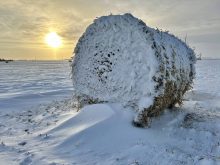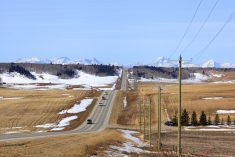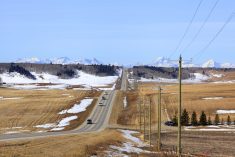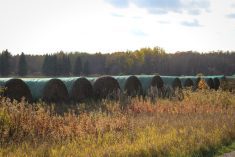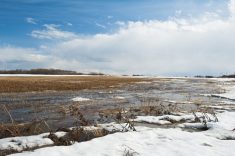(Reuters) – Two days of rainstorms in Saskatchewan, Canada’s biggest wheat- and canola-growing province, may have done more harm to crops than good, even though farms were parched, a Saskatchewan government official said on Wednesday.
Much of the province received rain on Monday and Tuesday, with the capital, Regina, collecting about 90 millimetres (3.5 inches), according to data from the federal environment department.
High winds and excessive rain amounts “lodged” some wheat crops and knocked flowers off late-developing canola, said Shannon Friesen, cropping management specialist at the Saskatchewan government. Lodging refers to high winds or storms knocking over crops.
Read Also

USDA sees tighter U.S. corn stocks, soybeans and wheat unchanged
The USDA is forecasting tighter U.S. corn ending stocks for 2025/26 due to increased exports. The supply/demand balance sheets for soybeans and wheat were unchanged.
“Unfortunately, this rain would have been nice four or five weeks ago instead of now,” she said.
Parts of the Canadian Prairies have had the driest conditions in decades, limiting yields in the world’s biggest canola- and durum-exporting country. Grain marketer CWB last week forecast a sharp drop in yields following a crop tour.
More positively for farmers, the rain will help fill out wheat kernels and canola pods, and help replenish soils for next year, Friesen said.
A tornado hit southwestern Manitoba on Monday and hail has also punished crops in parts of Saskatchewan and Alberta.
“These last rains are doing as much damage as they are helping,” said Derek Squair, president of Agri-Trend Marketing, which provides advice to farmers.
The rains also did not help early-maturing crops such as peas and lentils as they must be dry before harvesting, Friesen said.
Some farmers, however, expect to come out ahead from the storms.
Donovan Hall, who farms near Wishart, Saskatchewan, expects the rain to fill in his canola pods, lifting yields. Hail missed his farm and his canola withstood strong wind gusts.
“We’re definitely going to get helped a little bit by this,” he said.
Rains in the next two weeks are most likely in the northern growing areas of Canada’s Prairie provinces, according to Commodity Weather Group.




